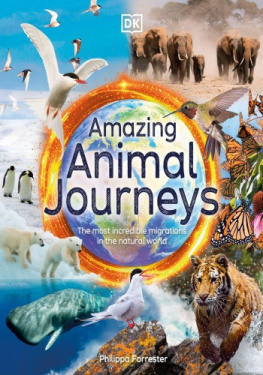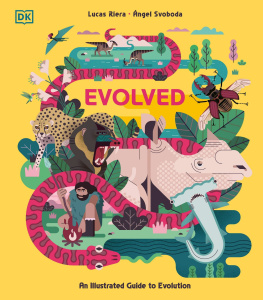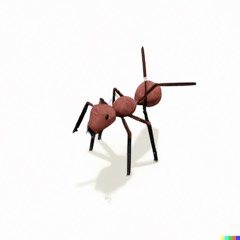THE ULTIMATE BOOK OF AMAZING ANIMAL FACTS
MORE THAN 1600 INCREDIBLE, FASCINATING AND ENTERTAINING BITS OF INFORMATION ABOUT THE WILDLIFE OF THE WORLD
THE INTERNET CROW
Copyright 2022 by Thoughtplay Ltd
All rights reserved.
No part of this book may be reproduced in any form or by any electronic or mechanical means, including information storage and retrieval systems, without written permission from the author, except for the use of brief quotations in a book review.
Find more fascinating books and facts at www. theinternetcrow.com .
CONTENTS
ALLIGATORS AND CROCODILES
Alligators and crocodiles are some of the most fascinating creatures in the animal kingdom. Both species have unique physical features, behaviors, and adaptations that make them incredibly successful predators and survivors. Here are some amazing facts about alligators and crocodiles:
- Alligators have an impressive bite force of 2,125 psi.
- Crocodiles can hold their breath underwater for up to two hours.
- Alligators can swim up to 20 miles per hour.
- Crocodiles can go through up to 3,000 teeth in their lifetime.
- Alligators have a sensory organ in the roof of their mouths which helps them detect vibrations in the water.
- Crocodiles can survive in saltwater and freshwater.
- Alligators can live up to 50 years in the wild.
- Crocodiles can go days without eating.
- Alligators have four short, webbed toes on their hind feet.
- Crocodiles can sneeze out water to expel debris from their noses.
- Alligators have powerful tails that can propel them through the water at high speeds.
- Crocodiles can regulate their internal temperature by opening and closing their mouths.
- Alligators are able to raise their heads above water while their bodies remain submerged.
- Crocodiles can move on land at speeds up to 17 miles per hour.
- Alligators can lay up to 50 eggs at a time.
Alpacas and llamas are fascinating animals native to the South American Andes. They both have long necks, slender bodies, and soft fur and can weigh up to 150 lbs. Alpacas are smaller than llamas, and their fur is used to make luxurious clothing and products. Amazing facts about Alpacas and Llamas:
- Alpacas and llamas are both members of the camelid family
- They have three-chambered stomachs to help them digest tough vegetation
- Alpacas come in 22 distinct colors
- An alpaca can live up to 20 years
- Llamas can carry up to 25% of their body weight
- Alpacas have padded feet which help prevent soil erosion
- Llamas have a unique vocalization which serves as a warning call
- Alpacas are highly social animals and live in herds
- Llamas can be taught to pull carts and be ridden
- Alpacas have an inner layer of fur which is highly insulating
- Llamas have excellent eyesight and hearing
- Alpacas have soft padded lips which help them pick up small food particles
- Llamas have a gestation period of 11 months
- Alpacas are shorn once a year
- Llamas produce a unique type of wool which is very strong and warm
Ants are some of the most fascinating creatures on earth. They are incredibly strong, efficient and highly intelligent, and able to lift over 50 times their own body weight and build complex underground colonies. Here are some amazing facts about ants:
- Ants have been on Earth for over 100 million years.
- Ants can be found on every continent except Antarctica.
- There are over 12,000 species of ants in total.
- Ants have a highly developed sense of smell and use it to communicate with each other.
- Ants can work together as a team to accomplish tasks up to 1000 times the weight of all the ants combined.
- Ants can run at speeds up to 300 body lengths per second.
- Ants have an accurate internal clock that helps them to know when to start and stop foraging for food.
- Ants use their antennae to touch, taste and smell their environment and communicate with each other chemically.
- Ants have strong jaws and can bite with a force of up to 1,000 lbs per square inch.
- Ants can survive up to 7 weeks without food or water.
- Ants are social and live in colonies with up to 500,000 members.
- Ants can recognize the chemical scent of their nest mates and can distinguish between the two major castes of workers and queens.
- Ants have the ability to learn complex behaviours.
- Ants can move their nests to adapt to changing environment conditions.
- Ants can live up to 30 years.
Anteaters are amazing animals that have evolved a wide range of adaptations for living in their distinct habitats. These amazing animals are known for their long snouts and sticky tongues, which they use to eat their favorite food: ants and termites. They also have powerful claws for digging, and a muscular body that helps them break into ant colonies.
- Anteaters have no teeth and rely on their long tongues to eat and get nourishment.
- Anteaters have a two-fingered forefoot and a two-toed hindfoot that allow them to grasp and hang onto branches while they feed.
- The tongues of an anteater can reach up to 60 cm in length, and they can move their tongue at an amazing speed of 150 times per minute.
- Anteaters have poor vision, but they make up for it with their highly advanced sense of smell.
- Anteaters can consume up to 35,000 ants in a single day.
- An adult anteater can weigh up to 20 kg, and can measure up to 1.5 metres in length.
- Anteaters have long claws which help them break open ant and termite colonies.
- Most species of anteaters are solitary animals, although some, such as the giant anteater, can form small groups of up to four individuals.



















